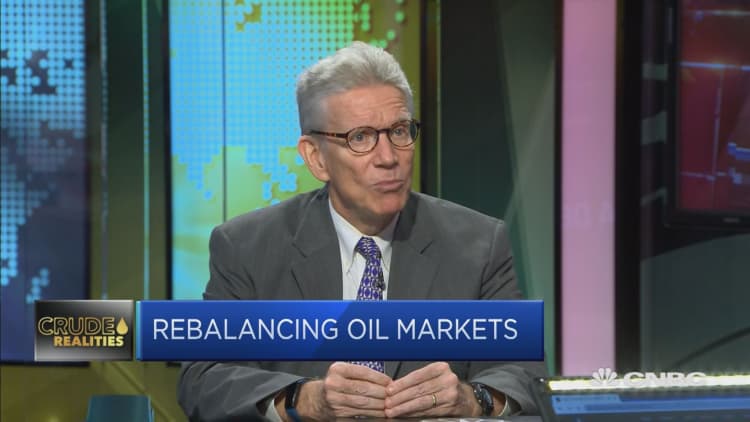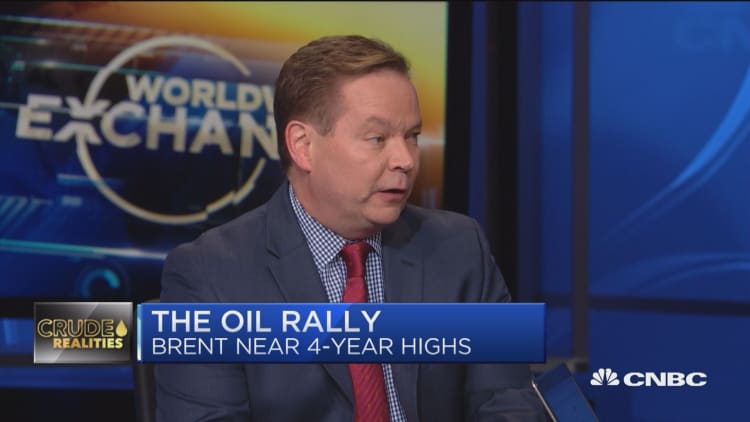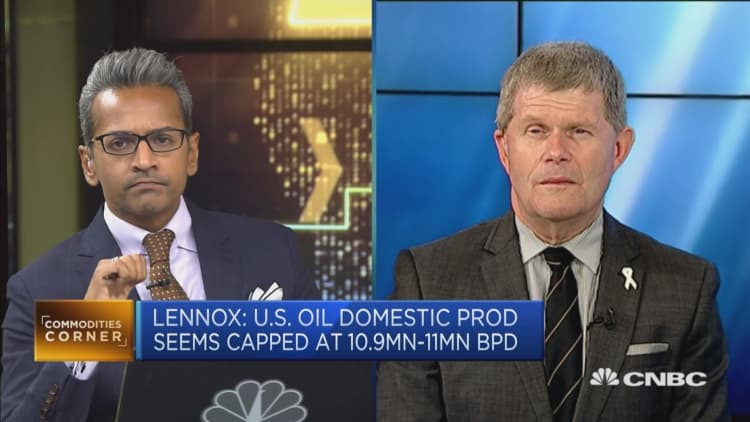
Oil futures extended their rally on Monday, hitting their highest levels since November 2014, as U.S. sanctions on Iran come into force and a North American trade deal fosters growth.
The United States and Canada forged a deal on Sunday to salvage the North American Free Trade Agreement (NAFTA) as a trilateral pact with Mexico, rescuing a three-country, $1.2 trillion open-trade zone that had been about to collapse.
"I think the NAFTA 2.0 deal helps prices — it takes away from some of the concerns that the trade war was going to impact growth," said Phil Flynn, an analyst at Price Futures Group in Chicago. "This increases the growth prospects not only for Canada and the U.S., but for North America as a whole."
Benchmark Brent crude oil futures rose $1.57, or 1.9 percent, to $84.30 at 1:21 p.m. ET, having touched their highest in almost four years at $84.73.
U.S. West Texas Intermediate (WTI) crude futures were up $1.66, or 2.3 percent, at $74.91 a barrel, and hit their highest since July.

Investors have indicated that they see prices rising, loading up on options that give the holder the right to buy Brent crude at $90 a barrel by the end of October. Open interest in call options at $90 a barrel has risen by nearly 12,000 lots in the past week to 38,000 lots, or 38 million barrels.
Higher oil prices and dollar strength, which has battered the currencies of several big crude importers, could hit demand growth next year, analysts said.
But for now the focus is U.S. sanctions on Iran's energy industry, which come into force on Nov. 4 and are designed to cut crude exports from the third-biggest producer in the Organization of the Petroleum Exporting Countries (OPEC).
"Iran has attempted to downplay the impact of looming U.S. sanctions by claiming that it has no intention of reducing oil production. However, such optimistic claims are falling on deaf ears," PVM Oil Associates strategist Stephen Brennock said.
Several major buyers in India and China have signaled that they will cut purchases of Iranian oil. China's Sinopec said it had halved loadings of Iranian oil in September.
"If Chinese refiners do comply with U.S. sanctions more fully than expected, then the market balance is likely to tighten even more aggressively," Emirates NBD analyst Edward Bell wrote in a note.

U.S. President Donald Trump spoke to Saudi King Salman on Saturday on ways to maintain sufficient supply.
"Even if they wanted to bend to President Trump's wishes, how much spare capacity does the kingdom have?" said Stephen Innes, head of trading for Asia-Pacific at futures brokerage Oanda in Singapore.
With about 1.5 million barrels per day of Iranian oil expected to go offline on Nov. 4, prices could "rocket higher with the flashy $100 per barrel price tag indeed a reasonable-sounding target" if investors doubted the Saudis ability to respond with enough extra output, he said.
ANZ bank said on Monday that "the market is eyeing oil prices at $100 per barrel."

